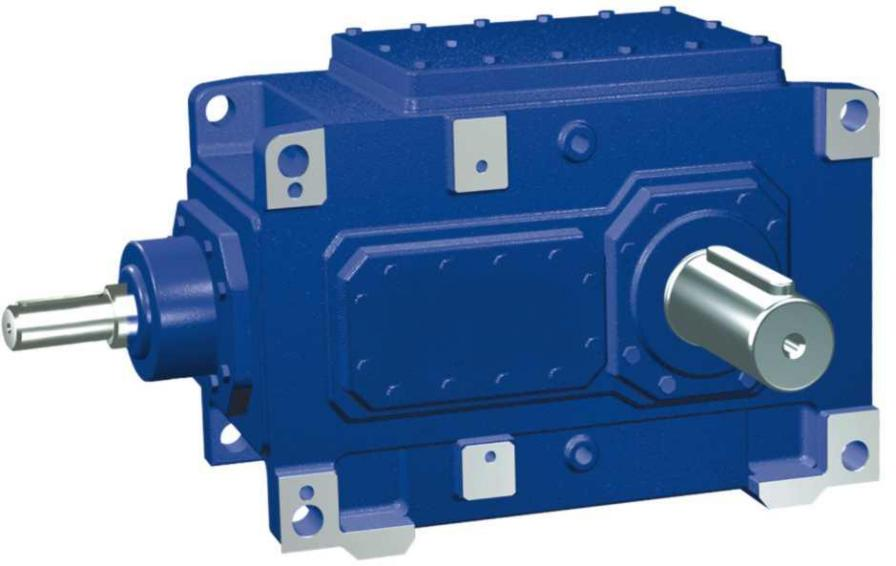
Knowledge
Reduce the Manufacturing Cost of Gearboxes (Part Two)

Procurement and Supply Chain Management
1. Supplier Management:
Strategic Partnership and Long-Term Agreements: Establish long-term strategic partnerships with key suppliers (such as steel, bearings, seals, cutting tools, etc.) to secure more favorable prices and more stable supplies.
Introduce Competition and Price Comparison: For non-strategic materials or standard parts, maintain 2-3 qualified suppliers to promote healthy competition.
Joint Purchasing/ Centralized Purchasing: If multiple departments within the company require the same type of materials, centralized purchasing should be carried out to enhance bargaining power.
Local Purchasing: Under the premise of ensuring quality and delivery time, give priority to local suppliers to reduce logistics costs and risks.
2. Inventory Management:
Lean Inventory: Implement lean production concepts (such as JIT) to reduce the capital tied up in raw materials, work-in-progress, and finished goods inventory, as well as storage costs. However, it is necessary to balance supply chain risks.
ABC Classification Management: Classify materials into ABC categories, and focus on managing high-value and critical A-class materials (with precise forecasting and safety stock), while simplifying the management of low-value C-class materials.
Vendor Managed Inventory: Explore the VMI model, allowing suppliers to manage part of the inventory.
IV. Production and Operations Management
1. Lean Production:
Eliminating Waste: Systematically identify and eliminate the seven types of waste in the production process (overproduction, waiting, transportation, processing itself, inventory, motion, and defects).
Value Stream Mapping: Draw value stream maps to identify bottlenecks and non-value-added steps, and reengineer processes.
5S Management: Maintain a clean and orderly workplace to enhance efficiency and safety, and reduce the time spent searching for tools and materials.
2. Enhance equipment utilization:
Equipment maintenance: Implement preventive maintenance to reduce equipment downtime due to malfunctions.
Production planning and scheduling optimization: Arrange production plans rationally, minimize model changeover time, and balance the load on production lines.
3. Human Efficiency:
Training and Skill Enhancement: Train employees to master multiple skills and efficient operation methods.
Ergonomics: Improve the working environment, reduce fatigue, and enhance efficiency.
V. Other Aspects
1. Standardization and Knowledge Management: Establish design norms, process standards, and operation guidelines to avoid repetitive design and trial-and-error costs. Accumulate a database of lessons learned.
2. Value Engineering/Value Analysis: Regularly conduct value analysis on existing products to identify opportunities to reduce costs without sacrificing key functions.
3. Application of New Technologies: Keep abreast of new industry processes, materials, and equipment (such as 3D printing for complex sand/mold casting molds and fixtures), and assess their potential for cost reduction.
4. Energy Management: Optimize the operation of public facilities such as air compressors and cooling systems to lower energy consumption costs.
5. Outsourcing Strategy: Evaluate the costs of in-house production versus outsourcing. For non-core, low-value-added, or processes requiring specialized equipment (such as certain heat treatments and surface treatments), consider outsourcing to professional and lower-cost suppliers.
Implementation Steps Suggestion
1. Cost Analysis: Thoroughly break down the current cost structure of the gearbox (materials, labor, manufacturing expenses, purchased parts, etc.), and identify the cost-intensive links (usually materials and key processing procedures).
2. Form a Cross-functional Team: Include personnel from design, process, procurement, production, quality, finance, etc.
3. Brainstorming and Plan Formulation: For the high-cost links, apply the above strategies and methods to propose specific improvement plans.
4. Comprehensive Promotion and Continuous Improvement: After successful verification, promote comprehensively and continuously monitor the effect, seeking new cost reduction opportunities.
Important Reminders
Balance Cost with Quality/Performance/Reliability: Cost reduction must not come at the expense of the core performance, reliability, and service life of the gearbox. Any changes must undergo strict verification tests.
Life Cycle Cost: Consider the total cost throughout the entire life cycle, including manufacturing, usage (such as efficiency, maintenance), and scrapping. Sometimes, upfront investment (such as better materials, more precise processing) can significantly reduce later costs.
Data-driven: Make decisions based on data analysis, avoiding relying on experience or intuition.
Continuous Improvement: Cost reduction is a continuous process, requiring the establishment of a long-term mechanism and culture.
By systematically applying the above strategies and under the premise of ensuring quality, enterprises can effectively reduce the manufacturing cost of gearboxes and enhance market competitiveness.
Vigor has more than 20 years experience and the professional team in producing the high quality gear reducer housing casting, die-forged gear plates and the gear shafts. If any thing we can help or any parts need to be developed, please contact us at info@castings-forging.com



